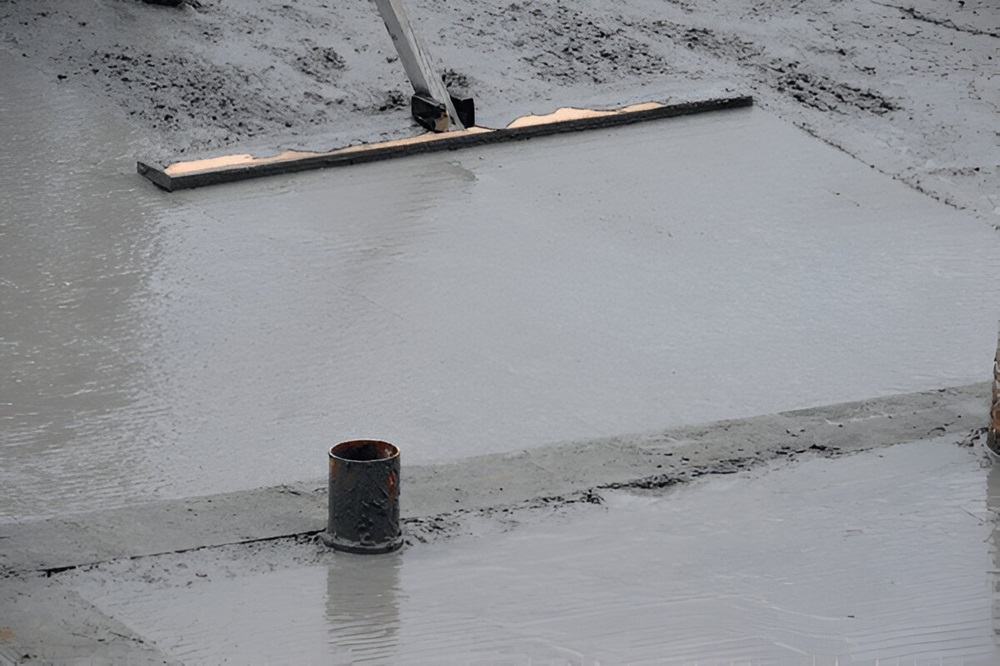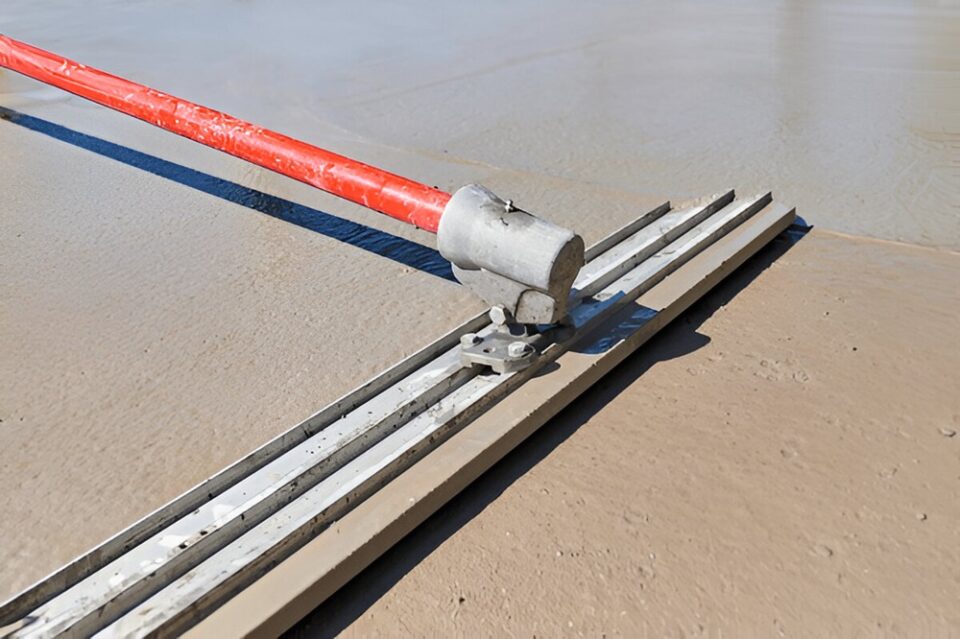To achieve a finish of professional quality on concrete surfaces, it is essential to employ the appropriate tools. The concrete walking float is one such essential tool used in the concrete finishing process. Walking floats are made to level and smooth freshly poured concrete by pushing down aggregate and bringing the cream a mixture of water and fine cement particles to the surface, guaranteeing a long-lasting and aesthetically pleasing finish. The function of a concrete walking float, its varieties, advantages, and the reasons why purchasing a high-quality model is necessary for better outcomes are all covered in this article.
Table of Contents
What is a Concrete Walking Float?
A concrete walking float is a long-handled tool used to smooth and level large concrete slabs. Unlike hand floats, walking floats allow the user to cover more area without stepping onto the wet surface, hence the name walking float. They are commonly used after screeding and before finishing tools like trowels are applied.
Walking floats are usually constructed with a large, rectangular or rounded blade made of magnesium, aluminium, wood, or resin. The operator can reach further thanks to their connection to a pole handle. So, they are perfect for large floor projects such as courtyards, sidewalks, storage floors, driveway and more.
Types of Concrete Walking Floats
There are several types of walking floats available, each designed for specific tasks and surface conditions:
- Magnesium Float
One of the most widely used materials for walking floats is magnesium because it is non-corrosive and lightweight. For initial levelling and smoothing, magnesium floats are perfect, particularly in hot climates were concrete sets quickly.
- Aluminium Float
Aluminium floats are robust and appropriate for challenging conditions, much like magnesium floats, but a little heavier. For contractors seeking a balance between weight and performance, they’re a good option.
- Wooden Float
Table with wood is usually used when a thick texture surface is desired due to their ability to absorb water. Although less widespread in modern construction, they still work in some situations.
- Resin Float
These floats, made of synthetic resin, are durable and useful to produce specific surface textures. They can be perfect for decorative concrete finish because they do not absorb water.

Benefits of Using a High-Quality Walking Float
- Improved Surface Finish
A high-quality concrete walking float ensures the concrete surface is evenly leveled and smoothed. This helps to avoid dips, bumps, and inconsistent textures.
- Effective workflow
High quality materials and ergonomic designs provide easy operation, reduce the fatigue of the worker and accelerate the finishing process.
- Stability and long life
Cheap or low -quality floors come out quickly, leading to inconsistent consequences. A high-quality float made of durable material will last a long time and will maintain size during frequent use.
- Versatility
Quality walking floats can be used across various concrete projects, from residential plates to industrial floors, makes them a reliable tool for contractors and DIYERS.
- Better Cement Paste Distribution
An effective float helps in bringing the right amount of cement paste to the surface, which is essential for later troweling and sealing steps.
Important Qualities to Consider in a Concrete Walking Float
To ensure you get the best tool for a job, consider the following features when choosing a walking float:
- Leaf material: For durability and light weight, go with aluminium or magnesium.
- Leaf size: Although it can be more difficult to control them, large knives cover a large area. There are 36 to 48 inch specific sizes.
- Handle Compatibility: For improved reach, make sure the float has or accommodates extendable handles.
- Ergonomics: Design that is balanced and lightweight reduces physical stress.
- Edge design: Square edges can work near walls and shapes, while round edges are reduced.
How to Use a Walking Float Correctly
The secret to a smooth, long-lasting surface is using a walking float correctly. Here is a detailed guide:
- Wait for the Correct Time: After screeding the concrete, let it settle a little until the bleed water (surface water) has gone. The surface may become weaker if you float too soon.
- Float in Passes That Overlap: Start at one end and use overlapping passes to push the float away. Gently pull it back while applying a little pressure.
- Keep Consistent Pressure: To prevent piercing the surface, apply uniform pressure. Allow the float to smooth out any flaws by gliding over the top.
- Check the surface problems: When floating, follow cavities, streaks or air pockets, and fix them immediately.
- Clean the flow frequently: To ensure stable performance, get rid of any accumulation on the blade.
When to Use a Walking Float in the Concrete Process
A walking float is used after screeding and before troweling. It is the first tool to properly embed the aggregate beneath the surface and to begin smoothing the concrete. After floating, the concrete can be finished with hand trowels or power trowels depending on the desired finish.
Applications of Concrete Walking Floats
For a variety of concrete work applications, concrete walking floats are necessary, including:
- Residential driveways and slabs
- Sidewalks and footpaths
- Commercial flooring
- Industrial warehouses
- Outdoor patios and hardscapes
- Overlays of decorative concrete
Long-Lasting Use Maintenance Advice
To maximize the life and performance of your walking float:
- Wash after each use: Use water and a stiff brush to get rid of cement residues.
- Appropriate storage: Keep it out of dry and direct sunlight to prevent war or war.
- Check for wear: Change all covered leaves or damaged handles for optimal results.
Conclusion
A good concrete walking float is an important equipment in the toolbox for concrete treatment. Investment in a well -produced float ensures a level with a professional surface, even if your respective enthusiasm or contractor, regardless of the level of experience. Walking Float is a small unit that has a major impact on surface preparation and durability over time. If you understand the types, benefits and appropriate concrete, you will always be ready to produce excellent concrete work.

